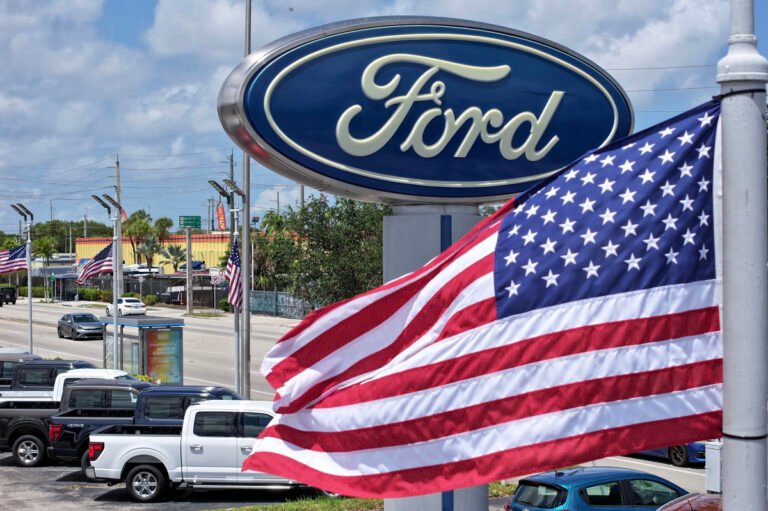
Sofia Ramirez is a principal at AgFunder.
AI in agrifood might bring to mind autonomous farms and robotic chefs, but for most corporates in the sector, the technology is making strides in more subtle, behind-the-scenes ways.
While the hype cycle drives headlines about generative models and autonomous everything, companies across the supply chain are already utilizing AI to address practical problems—especially those related to data silos, operational inefficiencies, and supply-demand mismatches. No longer a “future bet” for innovation teams, AI is becoming a core enabler across departments like marketing, procurement, logistics, and sustainability.
And though there are several agrifood companies still behind the AI curve, we’re finally starting to see real adoption and impact.
Learn more about where AI in the supply chain is actually working in a webinar with AgFunder and its portfolio company Lumi AI next week, June 25, 9am PST, noon EST, 5pm UK. Learn more and sign up here.
Why it feels different this time
Let’s be honest: digital transformation hasn’t always delivered in the food and ag space. Companies have spent years collecting data from ERPs, sensors, supplier reports, and spreadsheets. Most of this data ends up distributed across systems, buried in emails, or sitting in dashboards that not everyone trusts. The result? Decisions are made on more gut instinct than anyone cares to admit. The data is there, but the loop is never really closed.
Now, AI is finally helping teams make that data useful. Thanks to large language models (LLMs), retrieval-augmented generation (RAG), and smart agents, companies can get insights from the kind of messy, real-world data supply chain teams actually have, without the need to manually clean everything up, rebuild the stack, or go through a three-month IT rollout to see results. Sure, cleaner data always means better results, but the fact that teams can start with what they have and start getting value fast is a major unlock.
One of the impacts AI is currently having on the supply chain is its ability to make data analytics more accessible and useful, turning all that underutilized data into fast, clear, and practical decisions that show up on the bottom line. Teams can now explore what’s happening in their supply chain, why it matters, and what to do about it, without needing a full analytics team to pull the levers in the background.
How AI shows up in the supply chain today
Where are teams really using AI today, and what’s actually working?
For many, it starts small. Some are using AI chatbots to analyze supplier quotes, prepare for supplier negotiations, draft sustainability reports, summarize supplier audits, obtain quick insights into long contracts, and streamline daily work. These tools are fast, useful, and low-friction, and help teams move faster and reduce manual work, especially in areas such as reporting, documentation, and compliance.
Others are testing AI through targeted pilots (forecasting demand, reducing shrinkage, spotting anomalies in manufacturing, etc). The results can be promising, but the real shift happens when AI becomes embedded in core workflows.
That’s where things get interesting.
When AI moves out of pilot mode and is baked into planning, procurement, logistics, or sourcing workflows—interacting directly with messy, real-world data—the impact becomes hard to ignore.
Shelf availability improves because out-of-stocks can be prevented in advance. Systems catch supplier delays before they throw schedules out the window. Delivery routes are dynamically optimized based on real-time data, reducing transportation costs and improving on-time delivery rates. Price and supply forecasting sharpens. In warehouses, AI helps automate the nuts and bolts—like picking and storage—so things move faster and smoother. On top of that, it flags fulfillment issues early, giving teams the ability to solve those issues before they impact sales. In manufacturing and product support, AI helps identify early signs of machine failure and manufacturing line interruptions, allowing teams to intervene before downtime occurs.
In short, AI can mean millions in savings, quicker turnarounds, and more reliable service across the board.
Culture first
Of course, none of this works without teams being willing to try it.
For years, digital transformation in food and ag stalled not just because systems didn’t talk to each other, but because adoption required long training cycles, dedicated IT resources, and a level of digital readiness and hand-holding many operators lacked.
Today’s AI interfaces reduce that barrier: low-code or no-code AI solutions lower the entry threshold, enabling planners, buyers, and field managers to test tools directly, receive feedback quickly, and build trust through visible results, often in a matter of weeks, not quarters.
Let’s talk data analytics
We’re still early in this shift, but AI is clearly starting to make everyday work easier across supply chain and retail teams. You don’t need a big transformation to get started, and that’s exactly what we’ll explore in our first webinar with Lumi AI. No deep dives into data prep, no lectures on architecture, just real stories about what pushed teams to explore AI-powered analytics, what surprised them, and what’s actually driving results.
Sign up for Lumi AI’s first webinar: AI in supply chain: what actually works
Date: June 25, 9am PST, noon EST, 5pm UK
The webinar will focus on real AI use cases delivering ROI across the supply chain. We’ll hear from corporate leaders who’ve started using AI-driven analytics: what made them try it, what’s been surprisingly helpful, and what’s actually moving the needle.
Speakers:
- Kunal Thakker, Global Ops Executive (Walmart, Newegg, UPS, SEAIR Global)
- Colin Kessinger, Managing Director (End-to-End Analytics, Accenture, Stanford Lecturer)
- Sarthak Pany, Supply Chain AI Partner (Deloitte)
Who’s it for? Supply chain and retail leaders who want to understand where AI is already making a difference.
It’ll be a laid-back, peer-led conversation packed with ideas you can take back to your team.
Learn more and sign up here

The post Making AI in the supply chain actually work appeared first on AgFunderNews.




